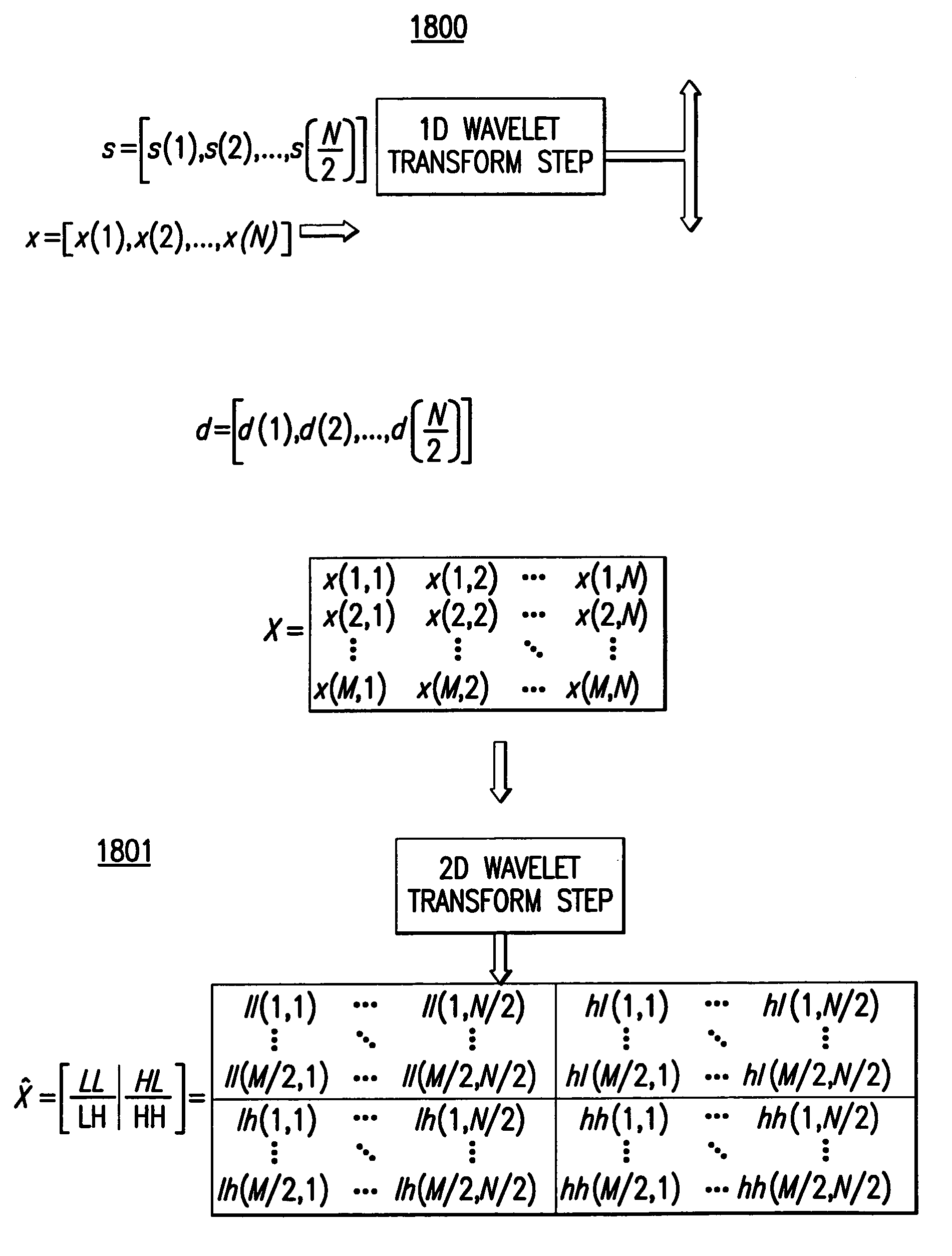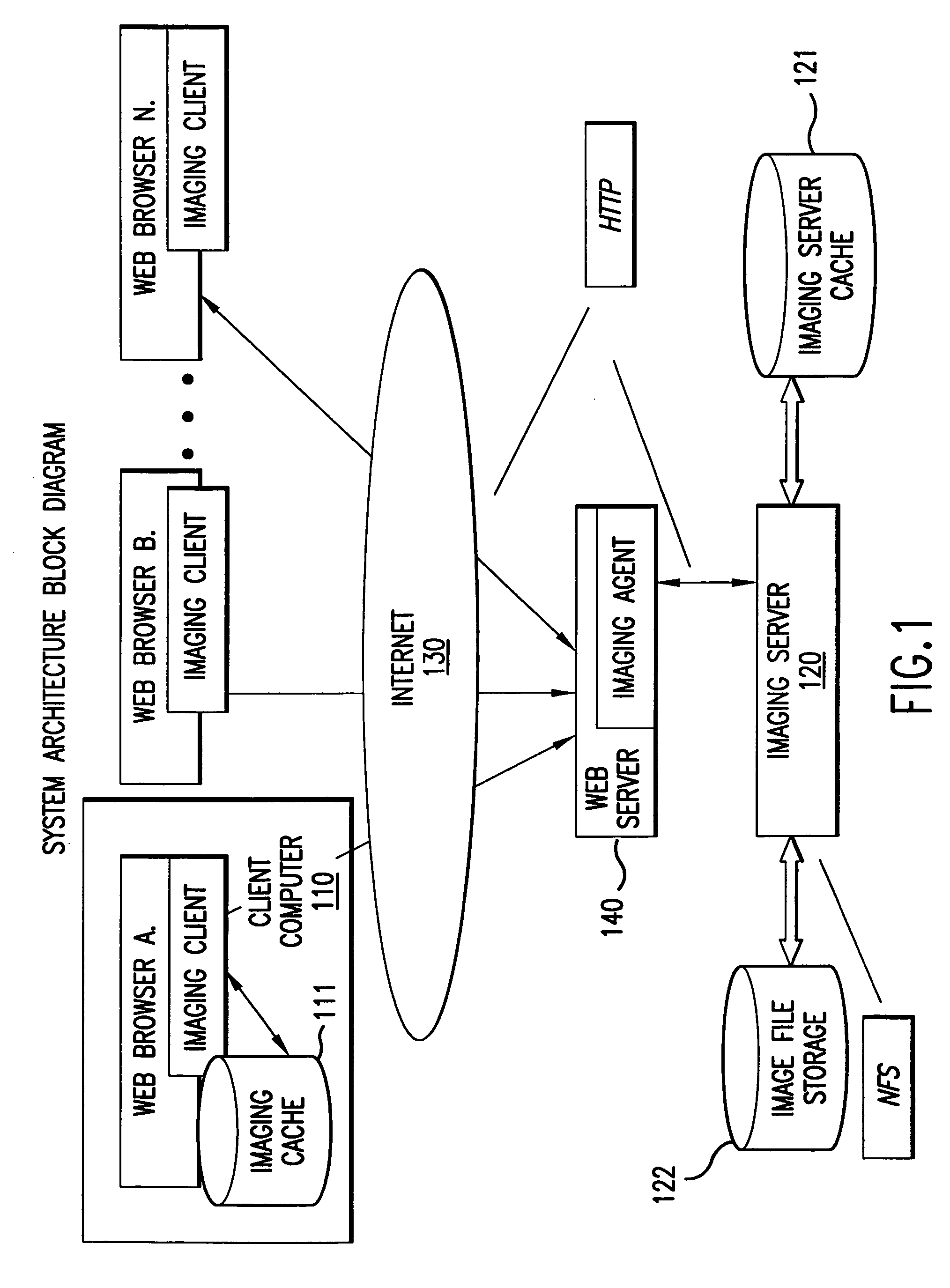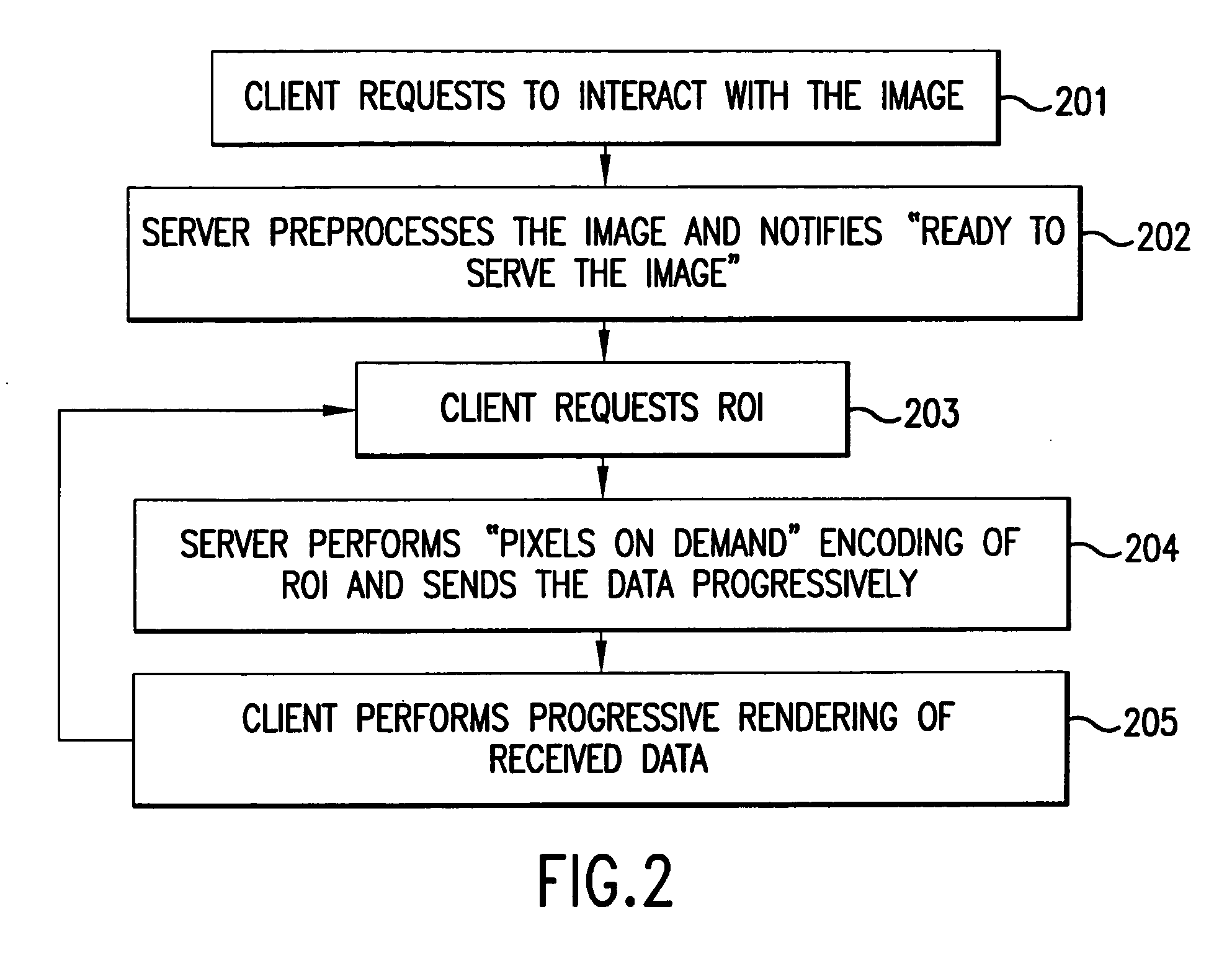System and method for the lossless progressive streaming of images over a communication network
a technology of progressive streaming and communication network, applied in the field of still image transmission systems, can solve the problems of inefficient transfer of full image, lossless streaming, and time-consuming and time-consuming, and achieve the effect of avoiding computationally intensive tasks
- Summary
- Abstract
- Description
- Claims
- Application Information
AI Technical Summary
Benefits of technology
Problems solved by technology
Method used
Image
Examples
examples
1. Given
[0245]Image depth of 12-bits[0246]Screen depth of 8-bits[0247]Linear luminance mapping, i.e.,[0248]Maximal Gradient
[0249]Maximalgradient=28212=2-4.
[0250]The number of bit planes reduced from the request list is:
[0251]⌊log2(1Maximalgradient)⌋=⌊log2(12-4)⌋=4.
2. Given a luminance mapping with Maximal gradient=2
[0252]The number of bit planes reduced from the request list is:
[0253]⌊log2(1Maximalgradient)⌋=⌊log2(12)⌋=-1.
[0254]Thus, one bit plane is added to the original set.
6.3 Step 403: Encoding the Request List
[0255]The client imaging module in the client computer 110 encodes the request list into a request stream that is sent to the server computer 120 via the communication network 130 (FIG. 1). The request list encoding algorithm is a simple rectangle-based procedure. The heuristics of the algorithm is that the requested data block usually can be grouped into data block rectangles. From the request list of data blocks indexed by the encoding algorithm computes struct...
PUM
 Login to View More
Login to View More Abstract
Description
Claims
Application Information
 Login to View More
Login to View More - R&D
- Intellectual Property
- Life Sciences
- Materials
- Tech Scout
- Unparalleled Data Quality
- Higher Quality Content
- 60% Fewer Hallucinations
Browse by: Latest US Patents, China's latest patents, Technical Efficacy Thesaurus, Application Domain, Technology Topic, Popular Technical Reports.
© 2025 PatSnap. All rights reserved.Legal|Privacy policy|Modern Slavery Act Transparency Statement|Sitemap|About US| Contact US: help@patsnap.com



